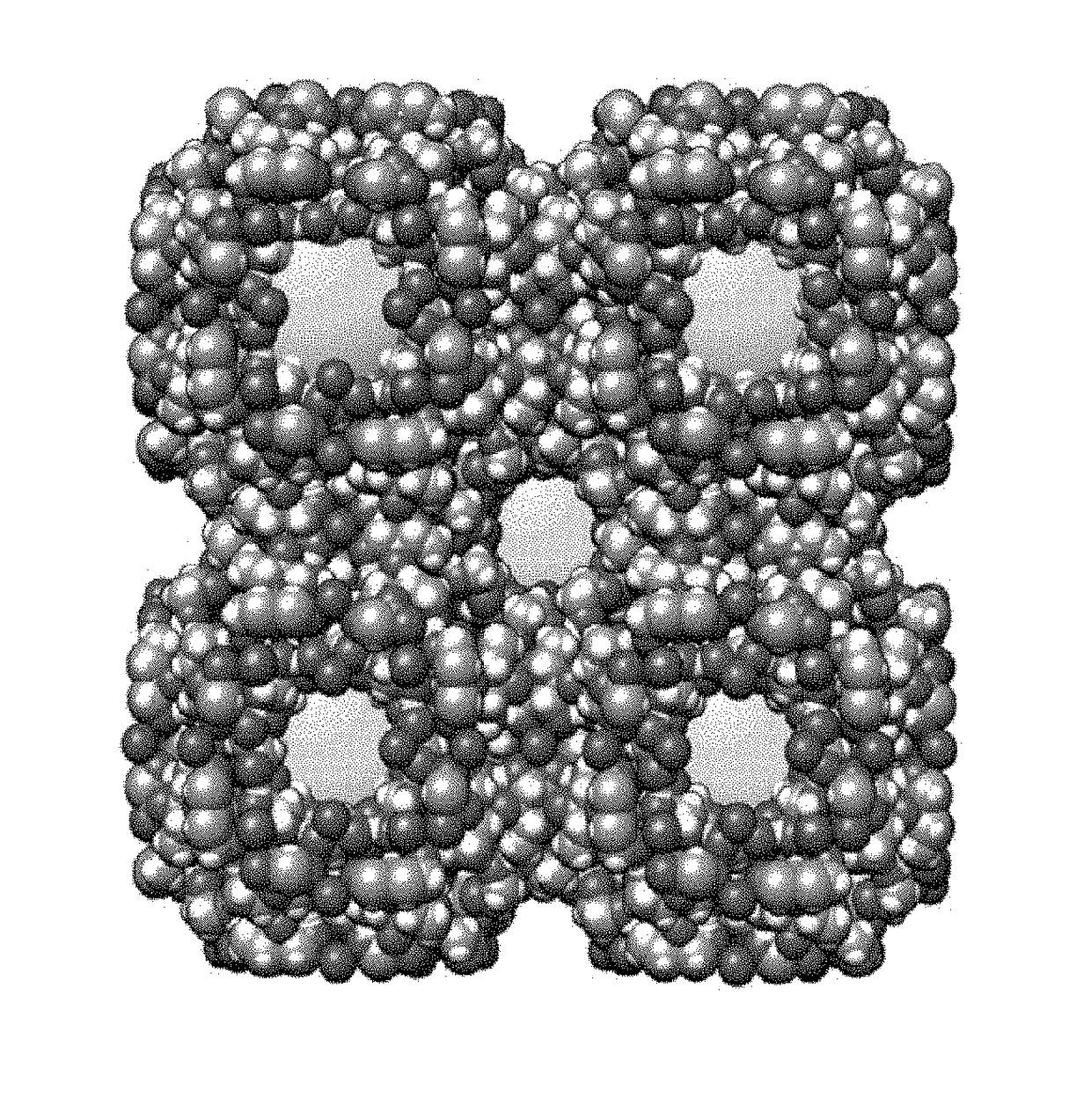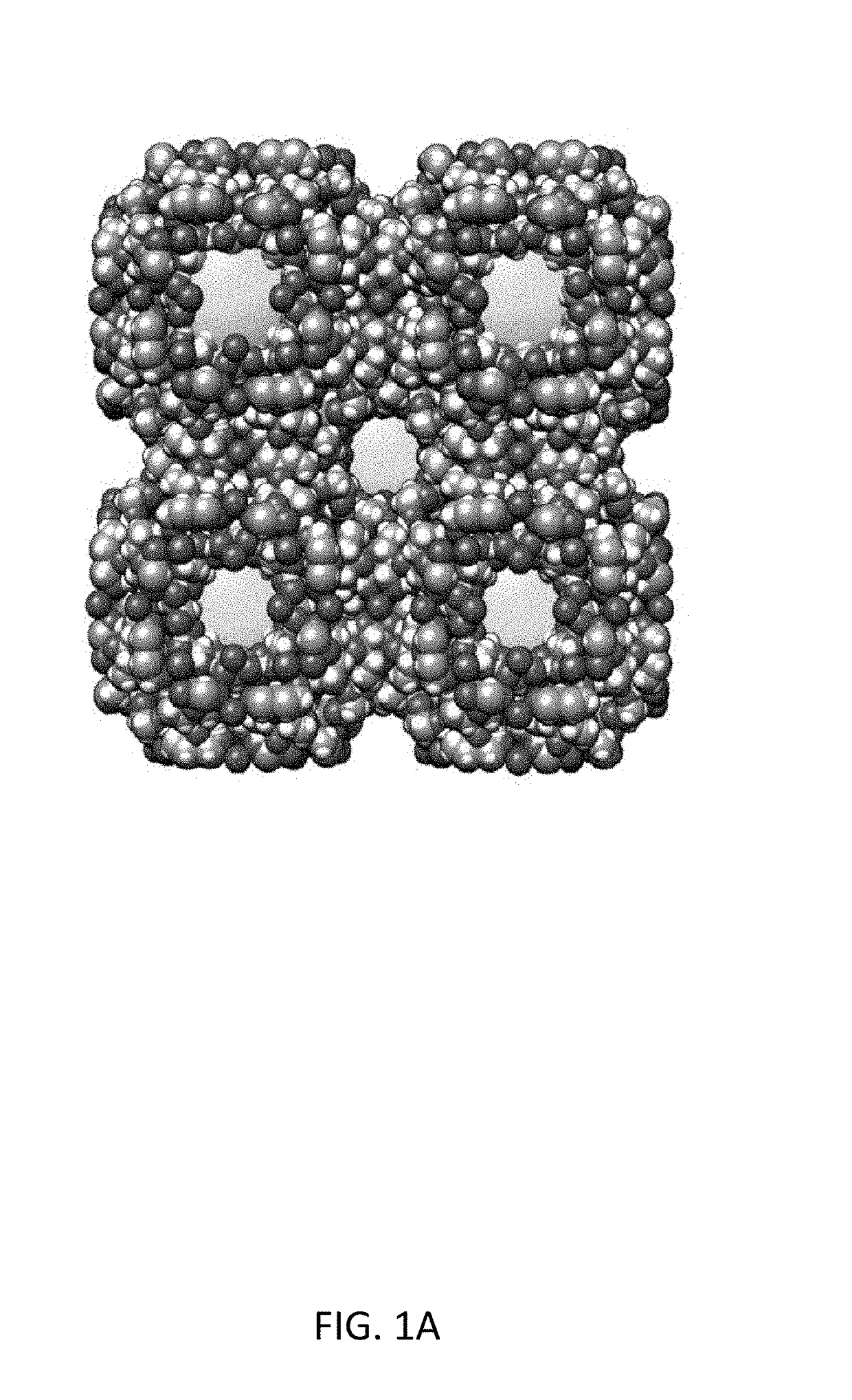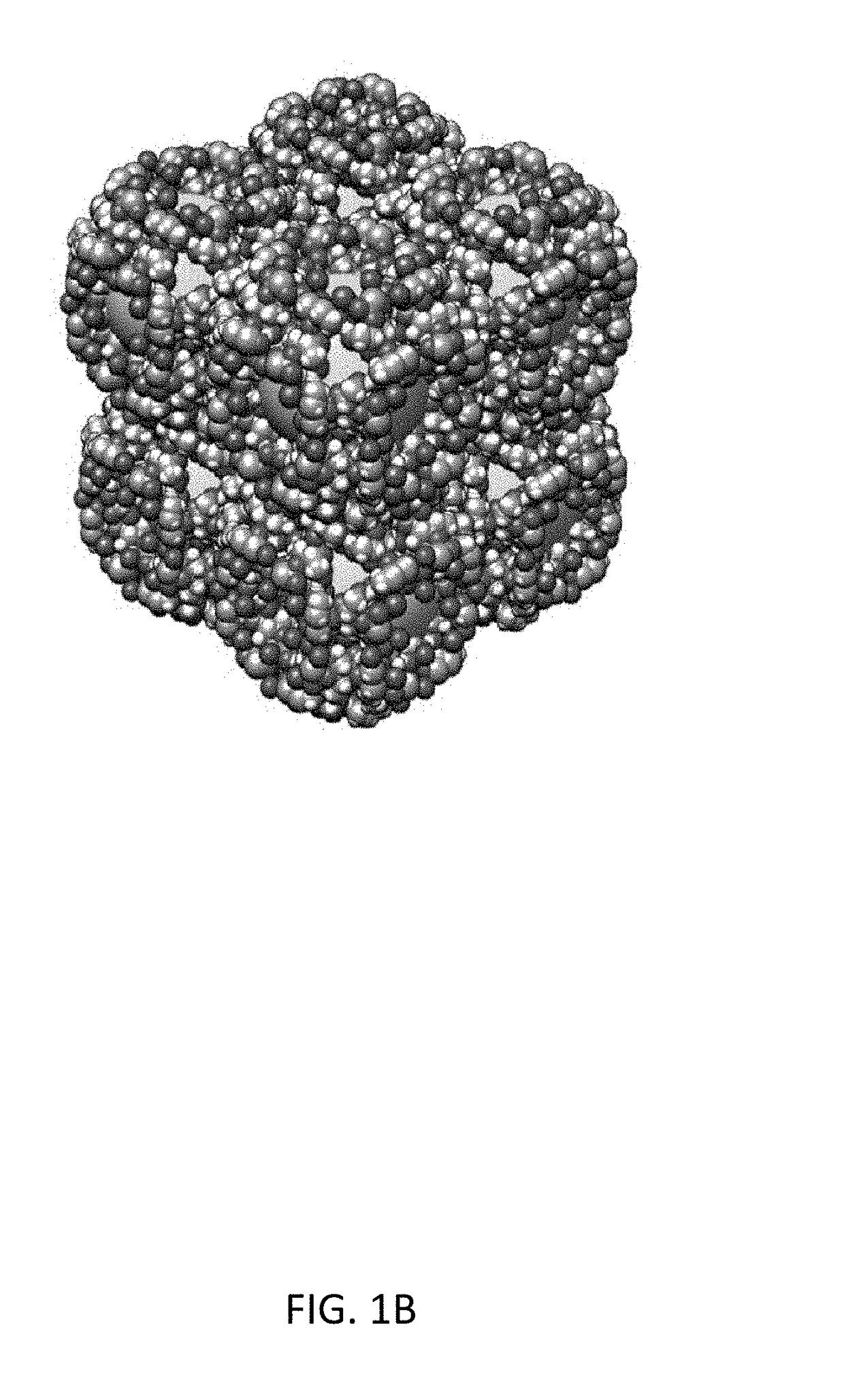Carbohydrate-mediated purification of petrochemicals
- Summary
- Abstract
- Description
- Claims
- Application Information
AI Technical Summary
Benefits of technology
Problems solved by technology
Method used
Image
Examples
example 1
and Methods
[0108]Potassium hydroxide, rubidium hydroxide hydrate, cetyltrimethylammonium bromide (CTAB) and MeOH were all purchased from Sigma Aldrich, while γ-cyclodextrin (γ-CD) was obtained from WACKER (CAVAMAX W8 PHARMA). All chemicals were used as received without further purification. CD-MOF-1 and CD-MOF-2 were prepared according to the literature procedures (Smaldone, R. A.; Forgan, R. S.; Furukawa, H.; Gassensmith, J. J.; Slawin, A. M. Z.; Yaghi, O. M.; Stoddart, J. F. Angew. Chem. Int. Ed. 2010, 49, 8630; Furukawa, Y.; Ishiwata, T.; Sugikawa, K.; Kokado, K.; Sada, K. Angew. Chem. Int. Ed. 2012, 51, 10566). Particle size control experiments on CD-MOF-1 were undertaken using a modified protocol from the literature (Furukawa, Y.; Ishiwata, T.; Sugikawa, K.; Kokado, K.; Sada, K. Angew. Chem. Int. Ed. 2012, 51, 10566). Large CD-MOF-2 crystals were harvested and ground using a KRUPS type F203 blender prior to grinding with a pestle and mortar. The ground particles were sieved und...
example 2
Protocols
[0110]The extended metal-organic frameworks, CD-MOF-1 and CD-MOF-2, were prepared according to literature procedures (Smaldone, R. A.; Forgan, R. S.; Furukawa, H.; Gassensmith, J. J.; Slawin, A. M. Z.; Yaghi, O. M.; Stoddart, J. F. Angew. Chem. Int. Ed. 2010, 49, 8630; Furukawa, Y.; Ishiwata, T.; Sugikawa, K.; Kokado, K.; Sada, K. Angew. Chem. Int. Ed. 2012, 51, 10566).
[0111]2.1. Synthesis of CD-MOF Analogs
[0112]CD-MOF-1: γ-CD (1.30 g, 1 mmol) and KOH (0.45 g, 8 mmol) were dissolved in H2O (20 mL). The solution was filtered through a 45-μm syringe filter and decanted into separate vials. MeOH was allowed to diffuse slowly into the solution over a period of a week.
[0113]CD-MOF-2: γ-CD (1.30 g, 1 mmol) and RbOH (0.82 g, 8 mmol) were dissolved in H2O (20 mL). The solution was filtered through a 45-μm syringe filter and decanted into separate vials. MeOH was allowed to diffuse slowly into the solution over a period of a week.
[0114]2.2. Particle Preparation and Activation
[0115]T...
example 3
opic Characterization of CD-MOF Samples
[0123]3.1. Optical Microscopy (OM)
[0124]Optical Microscope (OM) images were obtained using an Olympus BX53 microscope with an Olympus DP25-mounted camera.
[0125]3.1.1. CD-MOF-2 Particles
[0126]Particle images were analyzed using optical microscopy in order to determine particle size and shape distributions. In an effort to prevent degradation of the particles by solvent loss, they were mounted onto glass slides using paratone oil. The images of CD-MOF-2 particles employed in the top-down column investigations are illustrated under an optical microscope in FIG. 6. We believe the variation in particle shape and size arising from the grinding phases is the primary reason for inefficient particle packing, resulting in poor separations.
[0127]The particles of CD-MOF-2 observed under an optical microscope have irregular shapes and sizes, ranging from 0.5-37 μm in cross section. Although the observed CD-MOF-2 particles were fragmented, they remained crys...
PUM
| Property | Measurement | Unit |
|---|---|---|
| Particle size | aaaaa | aaaaa |
| Particle size | aaaaa | aaaaa |
| Particle size | aaaaa | aaaaa |
Abstract
Description
Claims
Application Information
 Login to View More
Login to View More - R&D
- Intellectual Property
- Life Sciences
- Materials
- Tech Scout
- Unparalleled Data Quality
- Higher Quality Content
- 60% Fewer Hallucinations
Browse by: Latest US Patents, China's latest patents, Technical Efficacy Thesaurus, Application Domain, Technology Topic, Popular Technical Reports.
© 2025 PatSnap. All rights reserved.Legal|Privacy policy|Modern Slavery Act Transparency Statement|Sitemap|About US| Contact US: help@patsnap.com



